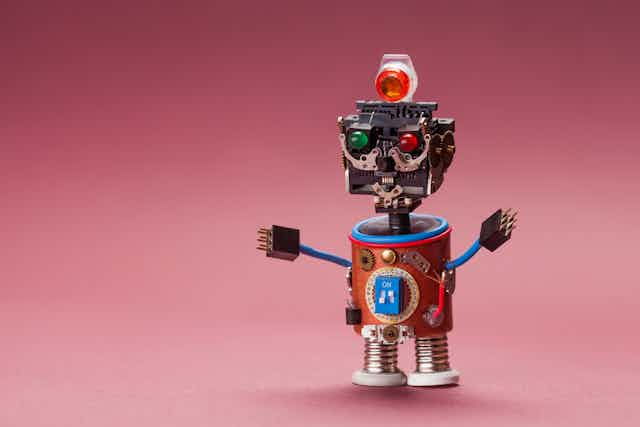Automation promises to be one of the great social challenges of our generation. The fear that robots will steal our jobs is an old one. But it’s being felt all the more acutely thanks to the rise of new technology.
What’s often overlooked is the role that tax policies play in this. Current policies in many countries, including the US and UK, encourage automation even when it would not otherwise be efficient. Plus, the switch to automation also dramatically reduces the government’s tax revenue because fewer human workers mean fewer tax contributions. This means that any attempt to deal with the rise of robots will be inadequate if it fails to consider the tax implications.
The historic lack of attention paid to the tax side of automation has very recently started to change. Last year in Europe, the European Parliament voted down a proposed “robot tax,” citing concerns over stifling innovation. Around the same time, South Korea announced what was cited as the world’s first “robot tax”, by limiting tax incentives for businesses investing in automation. Discussions about automation tax policy and legislative solutions are in their very early stages.
How automation helps tax avoidance
In an article forthcoming in the Harvard Law and Policy Review, we argue that existing tax policies encourage automation, even when a person would be more efficient than a machine. That’s because automation allows firms to avoid wage taxes, which fund social benefit programmes such as Medicare, Medicaid, and Social Security in the US, or National Insurance contributions in the UK. Firms are mostly responsible for just paying wage taxes for human workers to their governments.
In the US at least, there is a further incentive to automate because firms can claim accelerated tax deductions for automation equipment, but not human wages. Wage taxes are generally only deductible as paid. This structure allows firms to generate a significant financial benefit from claiming significant tax deductions sooner for robots.
Automation also results in indirect tax incentives. For instance, human workers are also consumers who are responsible for paying consumption taxes, such as retail sales tax (RST) in the US or value added tax (VAT) in the UK. Employers are generally thought to bear at least some of the cost of these taxes, as they may have to increase salaries in response to higher taxes on workers. Because robot workers are not consumers, they are not subject to these indirect taxes and so firms can avoid any associated burden.

Perhaps most concerning, these policies result in dramatically reduced tax revenue for the government. That’s because most government revenue comes from wage and consumption taxes. Corporate taxation now represents less than 9% of the overall tax base in the US and is likely to significantly decrease following the recently enacted Tax Cuts and Jobs Act of 2017.
When firms replace people with machines (or elect to automate initially), the government loses the ability to tax workers. This is not compensated for in the form of higher taxes on corporate earnings. In the aggregate, this could amount to hundreds of billions of dollars a year in lost tax revenues if robots replace workers to the extent predicted by many experts.
This all stems from the fact that tax policies are designed to tax labour rather than capital. It creates unintended consequences when the labour is itself capital in the form of machines.
Removing the incentives
We propose a variety of mechanisms for removing the tax incentives in favour of automation. Corporate tax deductions could be stopped for automation equipment. This would eliminate the advantages firms get from automating over wage taxes, deduction timing, and indirect taxes.
An “automation tax” could be based on existing unemployment systems. Firms could be required to pay additional amounts into an insurance plan if they automate at the expense of human workers.
Tax preferences could be granted for human workers to offset preferences for machines. This would essentially mirror the proposed removal of corporate tax deductions for automated workers. Instead, it would make hiring people a more attractive proposition.
A corporate “self-employment” tax could be created for firms that rely on automation. This would substitute for what the firm would have paid if it were staffed with human workers for whom it owed wage taxes. This would be similar to the self-employment taxes that individuals pay, which approximate the social security taxes that they would otherwise owe. This tax could be based on a ratio of corporate profits to gross employee compensation expenses.
Finally, the corporate tax rate could be increased in combination with the above mechanisms. In fact, a combination of these proposals may be necessary.
Improving efficiency
Ultimately, tax neutrality between machines and people will improve efficiency by allowing firms to select the more efficient worker without tax-based distortions. Because tax policies currently encourage automation, it gives firms an incentive to replace workers with robots for tax purposes – even when people might otherwise be better.
Tax neutrality will not solve the problem of reduced government tax revenue, however. That might require a fundamental rethink of the ways in which we tax labour vs capital, and companies vs workers.
In the meantime, creating a tax neutral system that allows the marketplace to choose the most efficient option would be a step in the right direction. However, our proposals could be adopted in stronger forms to actively discourage automation. This would be a way to practically implement Bill Gates’ suggestion that governments slow the spread of automation, and the enhanced tax remittances could be used to fund other types of social benefits.
There are advantages to automation besides efficiency, such as improving safety and promoting innovation. Whether discouraging automation is desirable, is a debate that will continue for as long as new technology develops.

